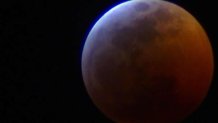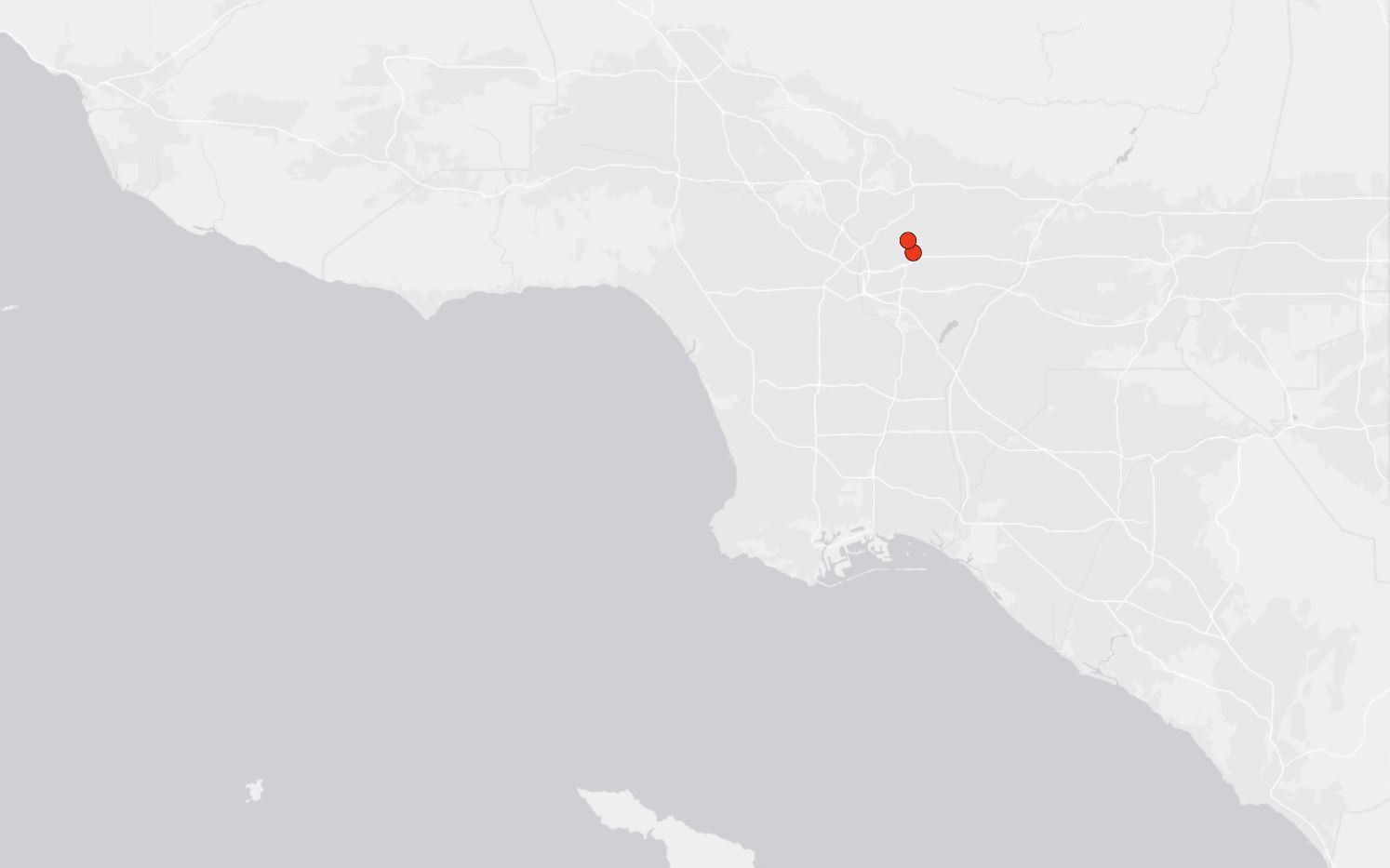The new year is here, which means the Earth just finished a full circle around the sun. With the new year comes new opportunities to look up at the sky, for beautiful cosmic sights worth breaking out the telescope and camera.
Some are annual events we can look forward to every year, while others are more rare, caused by the perfect astronomical alignment of planets and stars.
Whether you're a fan of the science of physics and astronomy, or you just love the gorgeous galactic views, here's a calendar of some space highlights you can look forward to in 2022.
Note: The dates and times in this calendar were gathered from NASA's Sky Events Calendar by Fred Espenek and Sumit Dutta, unless otherwise noted, and they are based on the assumption the viewer is in or near Southern California.
Get top local stories in Southern California delivered to you every morning. >Sign up for NBC LA's News Headlines newsletter.
January
The Quadrantid Meteor Shower is set to peak overnight, from late the night of Jan. 3 to early morning on Jan. 4. The shower is named for the Bootes constellation, originally known as the Quadrans Muralis.
According to the Griffith Observatory, "The moon will be a day past new moon and will not interfere with observations. The peak usually only lasts six hours and may produce 25 meteors per hour."
Local
Get Los Angeles's latest local news on crime, entertainment, weather, schools, COVID, cost of living and more. Here's your go-to source for today's LA news.
And, according to Heavens-Above, a space event tracking site and app, the most meteors will be visible in the hour or two before dawn, when the constellation the shower appears near moves closer to its highest point in the sky. The new moon will also make the shower more visible.
Earth will enter its perihelion, the period where it is closest to the sun in its orbit, the evening of Jan. 3. The exact time varies depending on the source, but it should happen sometime between 10:52 p.m. and 10:54 p.m.
On Jan. 7, the International Space Station is predicted to pass overhead for around five minutes, around 5:50 a.m.
Virgin Orbit is set to launch multiple satellites, just off of the West Coast using LauncherOne, which is a rocket carried under a 747. As of Jan. 3, it's set for 2 p.m. Pacific Time on Jan. 12.
This month's full moon, called the "Wolf Moon," among other names, will occur on Jan. 17.

February
February's full moon, called the "Snow Moon," the "Storm Moon," or the "Hunger Moon," will take place just two days after Valentine's Day, on Feb. 16.
March
March's full moon, the "Worm Moon," "Crow Moon" or "Sugar Moon," will make its appearance on March 18.
The end of winter arrives with the Spring Equinox on March 20, when the sun shines directly on the equator and day and night last for an equal amount of time.
April
April's full moon, the "Pink Moon," "Sprouting Grass Moon" or "Egg Moon," will arrive on April 16.
The Lyrid Meteor Shower, named for the Lyra constellation, is set to peak overnight between April 21 and April 22. Visibility may be low in Los Angeles, because the moon will be fairly bright that night.
May
The Eta Aquarid Meteor Shower, named for the constellation Aquarius, is set to peak overnight between May 5 and May 6. The meteor shower comes from Halley's Comet debris.
May's full moon, called the "Flower Moon" or "Milk Moon," will arrive on May 15. There will also be a total lunar eclipse visible that night, beginning around 7:40 p.m., reaching the maximum eclipse point around 9:11 p.m., and wrapping up just before midnight.
Lunar eclipses happen when the shadow of the Earth is cast across the moon, as the Earth passes between the moon and the sun. If 100% of the moon is covered by the shadow, it's a total lunar eclipse.
June
June's full moon, called the "Strawberry Moon," "Mead Moon," or "Hoe Moon," is set to appear on June 14.
Spring will come to a close when summer arrives on the Summer Solstice, on June 21.
On the first day of summer, the sun is directly over the Tropic of Cancer, an imaginary line around the Earth. The sun's position creates the longest day of the year, with the most daylight, for the Northern Hemisphere.
July
Earth will enter its aphelion, the period where it is furthest from the sun in its orbit, on July 3, at 12:10 a.m.
July's full moon, called the "Buck Moon," "Hay Moon" or "Thunder Moon," will appear on July 13.
August
August's full moon, the "Sturgeon Moon," will make its way into Los Angeles skies on Aug. 11.
The Perseid Meteor Shower, named for the constellation Perseus, is set to peak overnight between Aug. 12 and Aug. 13.
The meteor shower is made from space debris from the Swift-Tuttle comet, and it is one of the brightest meteor showers every year. However, this year, because of how close the shower arrives after the full moon, visibility may be lowered, according to Heavens-Above.
September
September's full moon, the "Harvest Moon" or "Barley Moon," will appear on Sept. 10.
The end of summer arrives with the Autumn Equinox on Sept. 22, when the sun shines directly on the equator and day and night last for an equal amount of time.
Sometime in late September or early October, NASA's DART spacecraft -- launched on Nov. 23, 2021 -- will finally reach and impact the Didymos asteroid system. The data collected from the impact will help NASA determine ways to protect Earth from any future asteroid threats that might arise.
October
October's full moon, the "Hunter's Moon" or "Travel Moon," will appear on Oct. 9.
The Orionid Meteor Shower, named for the constellation Orion, is set to peak overnight between Oct. 20 and Oct. 21. The meteor shower, like the Eta Aquarid meteor shower, comes from debris left by Halley's Comet.
November
November's full moon, called the "Beaver Moon" or "Frost Moon," will appear on Nov. 8. There will also be a total lunar eclipse visible that night, beginning around 12:01 a.m., reaching the maximum eclipse point around 2:59 a.m., and wrapping up just before 6 a.m.
The Leonid Meteor Shower, named for the constellation Leo, is set to peak overnight between Nov. 17 and Nov. 18.
December
December's full moon, called the "Cold Moon" or "Oak Moon," will appear over Los Angeles on Dec. 7.
The Geminid Meteor Shower, named for the constellation Gemini, is set to peak overnight between Dec. 13 and Dec. 14. This meteor shower is associated with debris from an asteroid, not a comet, and provides stunning sights because of the number of meteors visible.
Winter will arrive on Dec. 21, with the winter solstice.
On the first day of winter, the sun is directly over the Tropic of Capricorn, an imaginary line around the Earth. The sun's position creates the shortest day of the year, with the least daylight, for the Northern Hemisphere.
The second, and final, meteor shower visible in Los Angeles in December 2022 is the Ursid Meteor Shower, named for the constellation Ursa Minor. It is set to peak overnight between Dec. 22 and Dec. 23.
Other Rocket Launches
Rocket launches are subject to change based on a number of factors, like weather. Often, a specific day for the launch isn't selected until close to that day, so rocket launch events are "scheduled" in terms of target months.
As of Jan. 3, at least one Falcon 9 launch -- the reusable 2-stage rocket manufactured by SpaceX -- is set to blast off into space out of Vandenberg Air Force Base, no earlier than March of 2022.
That launch will send the WorldView Legion 1 and Legion 2 satellites into orbit.



